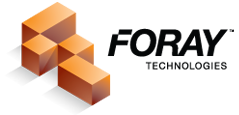Architecture
The Foray ADAMS platform is, above all things, an open platform. Our architecture allows secure, audited access by other systems to the Foray data and digital assets. And, Foray ADAMS can easily integrate with other systems, such as your records management system (RMS) or your laboratory information management system (LIMS). To preserve the chain-of-custody, audit trails are kept of all interactions with the system.
All acquired digital assets (video, audio, images, cell phone contents, forensic hard drive images, etc.) are stored in the asset repository server's native file system hierarchy using the asset file's original name (per SWGIT guidelines and chain-of-custody best practices). Each acquisition batch is brought into a numbered subdirectory inside a case/incident subdirectory. This directories may be in the format Set0001, Set0002, Set0003, ... or X0001, X0002, X0003, ... Here is an example:
First acquisition into a case/incident:
- \Case0001\Set0001\Original Assets\Image000001.RAW
- \Case0001\Set0001\Original Assets\Image000002.RAW
- \Case0001\Set0001\Original Assets\Image000003.RAW
- \Case0001\Set0001\Original Assets\Image000004.RAW
Second acquisition into a case/incident:
- \Case0001\Set0002\Original Assets\Image000001.RAW
- \Case0001\Set0002\Original Assets\Image000002.RAW
- \Case0001\Set0002\Original Assets\Image000003.RAW
Each asset file has the following files, similarly named, stored along side of it:
- audit trail file (tamper-proof audit trail for the asset)
- hash file (encoded file for verifying the authenticity of the asset)
- thumbnail file (small image of video or image file, etc.)
- metadata file (user-editable stored information about the asset)
So, using the example above, for the first image of the first case, here is what is actually stored in the repository:
- \Case0001\Set0001\Original Assets\Image000001.RAW
- \Case0001\Set0001\Original Assets\Image000001.RAW.audit
- \Case0001\Set0001\Original Assets\Image000001.RAW.hash
- \Case0001\Set0001\Original Assets\Image000001.RAW.thm
- \Case0001\Set0001\Original Assets\Image000001.RAW.xml
(Note that in these examples, "RAW" represents native camera formats such as Nikon's .nef, Canon's .cr2, Fuji's .raf, etc.)
Foray's repository database is simply an index of the metadata .xml files associated with each digital asset, along with the metadata .xml files stored at the case/incident level. All user data is stored in these .xml files. Even when digital assets are archived, the associated files are left on the repository server (audit, hash, thm, xml), since they are small in size, and can help locate an archived case or asset once it has been taken offline.
These open-systems-based metadata .xml files provide a convenient integration point for access to and from outside systems.
During acquisition, assets can be simultaneously transferred to one, two or many different repository servers at the same time. This provides for immediate backup/recovery options and for geographic distribution of asset originals across an agency WAN.
Any processing of assets (contrast adjustments, background noise elimination, etc.) generates a copy of the original asset. Successive intermediate copies can be made in order to demonstrate, in court, the method by which a video, audio, or image file was processed to a final result. The original is never ever modified. It can only be copied.
The ADAMS platform is built using Microsoft .NET and its repository can be any directory or network share with ACLs. A SQL database is used for indexing.
In order to provide centralized security and access control, the ADAMS platform automatically integrates with Microsoft's Active Directory or Azure AD.
To ensure a secure browser environment, ADAMS browser modules:
- Support Secure Sockets Layer (SSL)
- Prevent digital assets from being cached by browser, routers, proxy servers, etc.
- Never allow unsecured access to digital assets. Digital assets are never written to publicly accessible directories.
